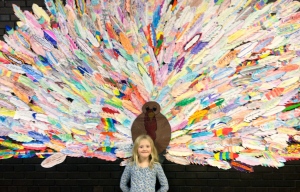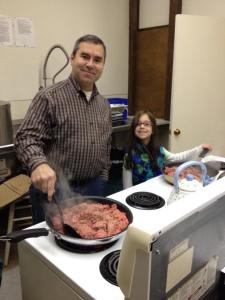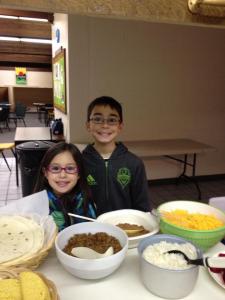Last year for Human Rights Day, I wrote a post for World Moms Blog on 10 Things To Do With Your Kids on Human Rights Day. The date of December 10 was chosen to honor the United Nations General Assembly‘s adoption on 10 December 1948 of the Universal Declaration of Human Rights (UDHR), the first global statement of international human rights principles. But ten things are not enough, so here are a few more ideas for simple and meaningful activities to do with your kids on Human Rights Day (December 10) 2012.

1. Make a one minute video showing what “It’s About Ability!” means to you, whether in the world at large or to you personally. The deadline for the It’s About Ability youth video contest on children with disabilities is December 15, 2012. But even if you don’t enter the contest or make a video, you and your kids can learn about and discuss the rights of children with disabilities by reading the “Thoughts for inspiration” in the contest guidelines and this simple explanation of the Convention on the Rights of Persons with Disabilities (which also includes more ideas for things you can do to change attitudes and rules so that children who have disabilities can go to school, play and take part in activities that every child wants to do.) The Learning Guide to the Convention of the Rights of Persons with Disabilities, designed to empower kids ages 12-18 to advocate for the rights of persons with disabilities, can be found here.

- Template for a dove
Image Source
(Note: this project was inspired by the Thankful Turkey at my daughter’s school. You can read more about that here.)
3. Learn about the challenges that children living in poverty face have overcome to succeed in school. Play the United Way‘s PASS THE GRADE game. In honor of the first Giving Tuesday on November 27th, The Greater Twin Cities United Way launched a fun, educational online game called PASS THE GRADE. (My friend ThirdEyeMom wrote about PASS THE GRADE; read her post here.)
4. Watch some UNICEF Cartoons for Child’s Rights together. Cartoons for Children’s Rights is a UNICEF broadcast initiative that aims to inform people around the world about children’s rights. The effort has forged partnerships with many well-known animation studios that have developed more than 80 half-minute public service announcements based on the articles of the Convention on the Rights of the Child. Each PSA illustrates a right described in the global rights treaty, such as ‘Freedom from Child Labour’ or ‘Protection from Neglect’. All the spots are non-verbal, in order to get the rights message across to everyone, regardless of language. The spots have aired on more than 2,000 television stations globally. Links to the top 10 can be found here.
5. Do an anti-bullying activity together like Sticks and Stones from Teach Peace Now. Ask your child what think about the saying “Sticks and stones can break my bones, but names can really hurt me.” Have they heard another version of this saying? Which is truer? Have they ever had someone say something to them that hurt their feelings. Has someone ever hurt them physically or tried to scare them or one of their friends? Have they ever hurt someone by something they said or did? You can give a personal example of a time you were a victim or a witness to bullying or hurt someone’s feelings. You can also read a book about bullying like This is Our House, Hey, Little Ant, Mr. Lincoln’s Way, Say Something, or Simon’s Hook.
Give each child some light gray paper “stones.” Have your kids write a behavior that could hurt someone or make them feel bad such as calling someone a name, or tripping someone. Younger children can draw a picture. Have them wrinkle up the “stone” and then try to smooth it out. Explain that once someone has been hurt, it is never forgotten. You cannot remove the hurt. The wrinkles will always be there.
Hang stones on wall to create a wall of intolerance or sit in a circle and pile the rocks up in the middle. Ask the kids to think about ways to prevent these bad things from happening. You can make a list together of ideas.
6. Go on a hunt for the human rights words around you. Human rights is not about complicated concepts; human rights is about the core values that everyone needs to live fully in this world. In talking about human rights with my own kids, I realized that I needed to start with the basic building blocks of language: words. Read more about how, once I realized that, I started to see human rights words all around me in HUMAN RIGHTS: Speaking The Language.
Once the activity is over, allow the children to talk about what happened. Discuss how they felt – not just as “blind” partners but their feelings of responsibility as “leaders” too. This can lead not only to a greater awareness of what life is like for people with sight (or hearing) disabilities, but to a discussion of the importance of trust in the whole community. This can lead in turn to a discussion of world society, how it works and how it can fail to work too. (teaches about Universal Declaration of Human Rights article 28; Convention on the Rights of the Child articles 3, 23)
9. Ask the question “What Does a Child Need?” Have your child lie down on a large piece of paper and trace their outline on the paper. Ask your child(ren) to name this paper child. Discuss and decide on the mental, physical, spiritual and character qualities they want this ideal child to have as an adult (e.g. good health, sense of humour, kindness) and write these qualities inside the outline. They might also make symbols on or around the child to represent these ideal qualities (e.g. books to represent education). Talk about what human and material resources the child will need to achieve these qualities (e.g. if the child is to be healthy, it will need food and health care); write them down on the paper outside of the outline. You can also read a simplified version of the Convention on the Rights of the Child. When children hear an article that guarantees a child each of the needs they have listed, they can write the number of the articles next to that item. Circle any needs identified but not covered by the Convention.
10. Check out the Amnesty International You Tube channel. Amnesty has uploaded more than 500 short videos on a wide variety of global human rights issues. Many videos are in multiple languages, including Spanish and Arabic. (Given the subject matter, many are more suitable for older kids and teenagers than younger kids. Be sure to preview for anything that might be upsetting to your own children.)
The Price of Silence – A music video that brings together 16 of the worlds top musicians—some of whom have fled oppressive regimes—in a rousing musical plea to guarantee human rights for all.
Wyclef Jean sings One Love in this slideshow about Children’s Rights
ADDITIONAL RESOURCES: You’re on your way to a great Human Rights Day! If you are a classroom teacher or homeschooling your kids (or if you just want to dig deeper), you can find tons more ideas through the following resources:
MY 2013 HUMAN RIGHTS DAY POST HUMAN RIGHTS DAY ACTIVITIES TO DO WITH YOUR KIDS
MY 2014 HUMAN RIGHTS DAY POST HUMAN RIGHTS DAY ACTIVITIES FOR YOU & YOUR KIDS
ABC – Teaching Human Rights – practical activities in English, French, Russian, Arabic, Chinese, and Spanish
The Advocates for Human Rights’ Discover Human Rights Institute – human rights education lesson plans and curriculum
Human Rights Here and Now – human rights lesson plans and resources
Raising Children With Roots, Rights and Responsibilities – activities for preschool and young elementary children





Excellent post Jennifer and thanks for all the great tips (including the United Ways Pass the Grade!). 🙂
LikeLike
Yes, thanks so much for tipping me off to that one! Thanks for your comment, Nicole!
LikeLike
🙂
LikeLike
Great post, Jennifer. I still remember that post on WMB.
I especially liked #5 in this post. I am going to do that with the kids that go for the karate class in my son’s group.
LikeLike
That’s SO great, Purnima! Have fun. Thanks for your comment!
LikeLike
Pingback: 10 Things To Do With Your Kids on Human Rights Day! « The Human Rights Warrior
Reblogged this on poet4justicedotwordpressdotcom.
LikeLike
Pingback: The Human Rights Lesson | The Human Rights Warrior
Pingback: Human Rights Day Activities To Do With Your Kids | The Human Rights Warrior
Pingback: Human Rights Day Activities For You and Your Kids! | The Human Rights Warrior
Pingback: Activities for Human Rights Day 2015 – The Human Rights Warrior
Pingback: Activities for Human Rights Day 2015 | The Advocates Post
Pingback: Activities for Human Rights Day 2016 – The Human Rights Warrior